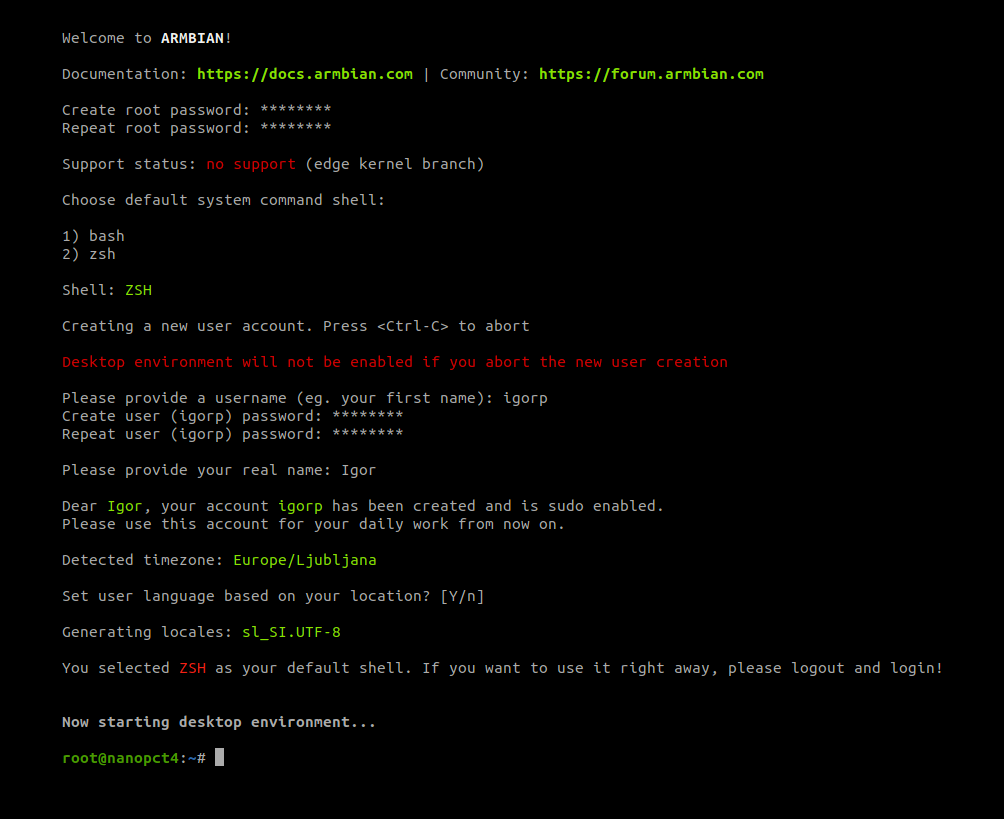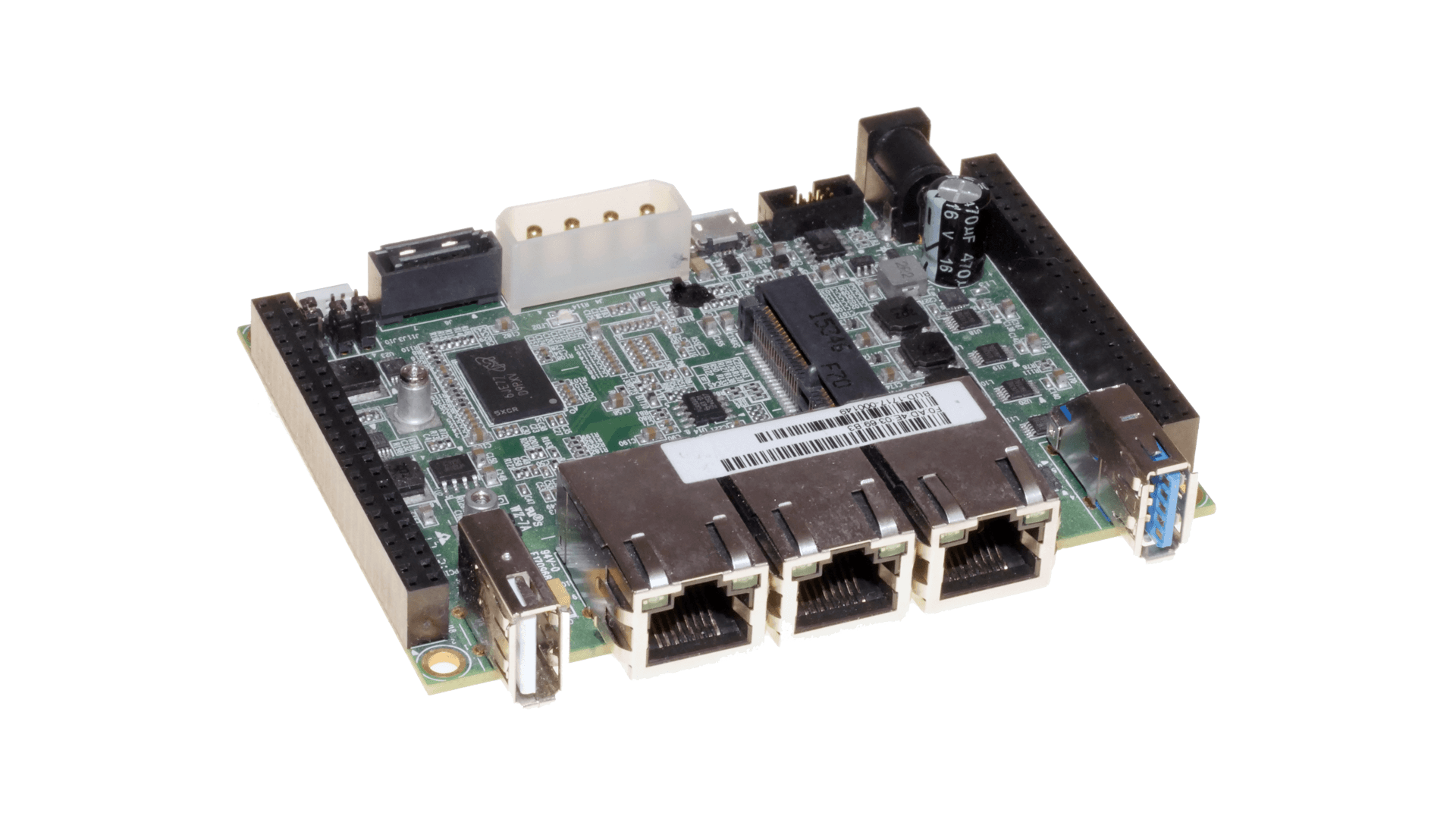What Does Community Support Mean?
Community maintained targets have full featured Armbian OS support but lack quality control imposed by Armbian standard support criteria. Boards are supported / maintained at least on the level of 3rd party Linux distributions. They are maintained (or not maintained) by community members (like you). These builds are provided by the Armbian project as a service to the community. They are automatically generated and untested.
What you can do to help lifting support status?
- support users of this board in our forums
- stand up as a maintainer and start maintaining the board
- provide tests results prior to point release and propose lifting support status
- Version 7 EspressoBIN (identifiable by sata power connection instead of molex) has ethernet ports in the reverse order. This can be fixed in armbianEnv.txt with the line “fdtfile=marvell/armada-3720-espressobin-v7.dtb”
- manual flashing to latest u-boot is mandatory, again (as part of 2022.05 release)! Download the right boot flash for your board: 512,1G,2G, number of RAM chips (identify by visual inspection – one on each side of the PCB opposite to each other. Later 1GB models have only one chip at the bottom) and appropriate memory speeds. You can obtain numbers from the current boot prompt. Also choose right memory: ddr3 are for V3-V5 EspressoBin’s (i.e. V5, 1g-2cs) and ddr4 images are for v7 EspressoBin’s. Insert ‘ddr3’ or ‘ddr4’ into the bubt command string. Copy this
flash-image-{ddr3,ddr4}-MEM-RAM_CHIPS-CPU_DDR.binto your formatted USB key, plug it into USB3.0 port and execute from u-boot prompt:bubt flash-image-ddr3/ddr4-MEM-RAM_CHIPS-CPU_DDR.bin spi usbIn case you experience instability reflash boot loader with lower CPU speed values! SoC speed can be found printed on the armada chip, under the heat sink. No 1200 chips have been reported, 800 is a safe option, 1000 is a likely option. It can also be found as part of the current u-boot output.
- Updated u-boot (2022.04) needs new default boot environment and boot script. U-boot now respects ethaddr and eth[0,1,2]addr variables. This is what you need to copy/paste into u-boot prompt:
printenv ethaddr env default -a saveenv # Including this line to make sure saveenv is executed.
- If ethaddr was previously changed, it can be set with “setenv ethaddr f0:ad:4e:08:00:00”, then “saveenv”
- If you manage to crash your SPI flash, get appropriate files and proceed with one of the rescue options: SATA, UART,
- if you need USB2 port on your mPCI slot (for Bluetooth or 4G/LTE modems) you need to move both jumpers near to the USB2 port. Position for this function is: away from the port.
After you download and boot?
Basic OS configuration is conducted at first boot. You are asked to set a root password, normal user and confirm your, automatically determined, language settings. If your hardware has internal media, you might want to transfer your OS to it. You can also choose to configure your OS first, setup applications, enable services and install to internal media later.
armbian-config
You can select different login shell (ZSH), enable 2FA for your SSH, enable virtual read-only file-system, switch to rolling releases, ... and more. Armbian config tool helps you configure your network (static, dynamic, enabling hotspot). Once you are done configurion your OS, you can proceed to software section. Armbian config provides clean and fast way of installing great selection of popular software titles. If you plan to use your board for running a home automation, file server, ad blocking, downloading media, ... we got you covered.
Different images? Missing features? -> Download SDK Looking for compatible accessories? Want to participate in development?
Dedicated applications images with Armbian Linux v6.12
Build Date: Dec 22, 2025
| Distro | Application | Torrent | Integrity | Size | ||||||
| Home Assistant | SHA | ASC | 509.5 MB | |||||||
| OpenMediaVault | SHA | ASC | 344.3 MB | |||||||
| * 3rd party unofficial applications deployment made with official Armbian build framework. Application support is not provided by Armbian team, but you are welcome to use our community forums for support. | ||||||||||
Specifications
1000tx 2 core 2GB 64bit docker eMMC i2c mpci sata spi spi flash switch usb3 wireguard Marvell A3700
* Specifications differ from hardware revision, model and software support level
FAQs

Support is provided in one of two ways:
- Free support is provided via general project search engine, documentation, community forums or IRC/Discord. Keep in mind this is mostly provided by our awesome community members in a best effort manner and therefore there are no guaranteed solutions.
- For commercial or prioritised assistance:
- book a an hour of professional consultation,
- consider becoming a project partner.
- Reach us out at https://armbian.com/contact,
dpkg -i linux-image-[branch]-family.deb linux-dtb-[branch]-family.deb. In that process you can enforce many customisation. Rolling releases images with Armbian Linux v6.12
Build Date: Dec 22, 2025
| Distro | Variant | User space | Kernel | Torrent | Integrity | Size | |
| Minimal / IOT | rolling | 6.12.63 | SHA | ASC | 303.3 MB | ||
| Minimal / IOT | rolling | 6.12.63 | SHA | ASC | 290.9 MB | ||
* The torrent option is recommended, as it will likely maximize your download connection speed.
Rolling releases are suitable for Linux enthusiasts who want cutting edge packages and have the skills to fix damage that a bad update might cause. If you want stability in a production environment or low headaches as a novice user, skip rolling releases.
They are only at, build and ship, Debian testing / Arch / Manjaro / Suse Tumbleweed / Kali / Gentoo support quality level!



